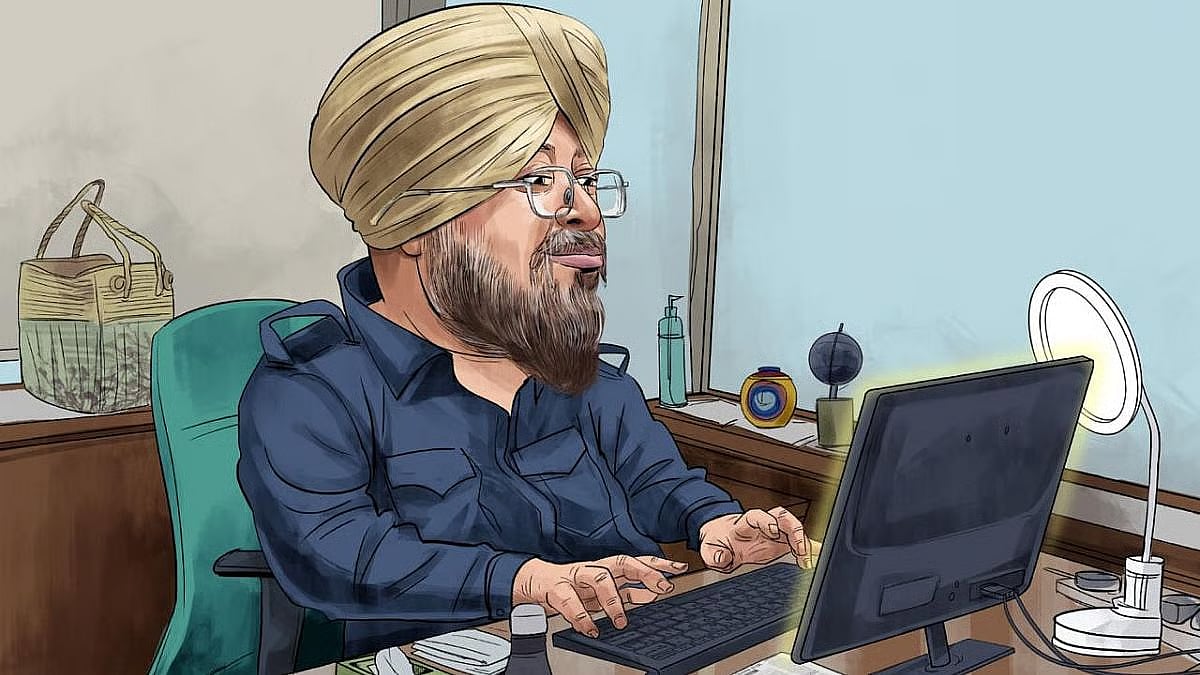The decision of the Maharashtra government announced by Chief Minister Uddhav Thackeray earlier this week to stamp all those “home-quarantined” for exposure to the corona virus and the reactions it has drawn highlight the complexity of fighting an epidemic. It revives memories of British colonial rule when the Epidemic Diseases Act passed in 1897 and its implementation drew the ire of several sections of society. The provisions of the Act were imposed in those days 123 years ago with varying degrees of severity to curb the spread of bubonic plague which broke out in the erstwhile State of Bombay in 1896. The Act itself and the harsh methods used by the ruling British invited criticism from none other than Bal Gangadhar Tilak.
In 2020, with a first-time Chief Minister in the saddle, Uddhav Thackeray has drawn some support for his quick decision to close down schools, colleges, theatres, malls, gyms till March 31 in five cities including Mumbai. But he has had to balance this with announcements that there are no plans to enforce a lockdown of any city though people have been asked to avoid visiting temples, mosques, churches and other public spaces. The balance between raising red flags and keeping the city ticking is a delicate one, and it’s a fine line that any administration must draw.
Yet, “stamping” takes the matter to a new level of ethical concerns. The thin line that administrators must draw quickly dissipates and fades away in the face of scare, which when overtaken by prejudice (overt or covert) quickly can deliver unpleasant situations. This is when someone sneezing comes to be looked upon as a criminal, or people are forced to alight from trains, or refused hotels, if they are seen as carriers of a pathogen that, after all, nobody can see or feel or sense. This is when social distancing stands reduced to social ostracising, and we know that the virus is winning and people are losing.
There is also no denying the fact that Maharashtra has had the largest number of cases so far, even though this is a small number just yet (44 of 149 cases in India, as of Mar. 19 afternoon). It is therefore not surprising that it became the first State to invoke the Epidemic Diseases Act and set out stringent measures to curb the spread of the virus.
An order has been issued by the Mumbai Municipal Commissioner Pravin Pardeshi to all officials at hospitals and the airports asking them to ink the left hands, with dates of isolation, of those arriving from regions impacted by COVID-19. The decision to order a home-quarantine as a self-policed method of isolation has not drawn as much criticism as the step to “stamp” those presumably exposed to the virus because of their travel history.
“Stamping” of course carries the burden of making it look like a stigma whereas health officials as well as the Chief Minister personally have made it clear that the administration cannot make rules for everything and self-restraint is the best option.
There are those who would agree with the argument offered for example in the Journal of Law, Medicine & Ethics in another context that by using quarantines and isolation as public health tools, governments are fighting “twenty first century pathogens with a fourteenth century tool box”. Yet, given the crowding and the poor levels of hygiene in our cities, there is support for the enforcement policy as well.
The celebrated medical expert Dr. Devi Shetty has been quoted as saying: “Centre is doing what it can. But it’s sad to see people acting irresponsibly. Cooperation is key. Social distancing is the only effective measure available to India to stop the virus from growing but that cannot happen unless people cooperate. We still see people travelling, the traffic rush on the roads is still the same. This must stop.”
History tells us that the merchant ships that brought wealth to the country’s commercial capital also brought death. The rich businessman in his horse-drawn carriage was not spared but the main victims were the poor, many of them migrants drawn by the opportunities offered by the port city. Over half of the population which were migrants lived in slums and chawls and in appallingly congested and unhygienic conditions in the 1890s. As it was then, so it is today. The worry is that with more than half the city living in slums, the death rate could be alarming this time as well.
The Epidemic Diseases Act, 1897 consist of four sections and is considered one of the shortest acts in India. It goes beyond ordinary laws, to give special powers to the government to take stringent measures during epidemics. The first section explains the title and the extent, while the second section, which has section 2A, gives powers to (Central government) take special measures and prescribe regulations to contain ’dangerous epidemic diseases’. The third section describes penalties for violating the rules. The fourth deals with legal protection to persons acting under the Act.
There is a good argument for a new legal framework to outline the plan of action needed during a public health crisis of this kind. The 123-year-old Epidemic Disease Act has a limitation in the changed political, social and economic setup. An article in the Indian Journal of Medical Ethics points out that the Act fails “to be in line with the contemporary scientific understanding of outbreak prevention and response, and only reflects the scientific and legal standards that prevailed at the time when it was framed.” Yet, when the virus is spreading, the temptation to use the force of the act is tempting.
With the changed Centre-State relations, the Act continues to reinforce the power of the State as in colonial India, instead of emphasising “prevention and response, vaccination, surveillance and organised public health response”. This was reflected in the case where the wife and father-in-law of a Bengaluru-based employee employee of Google India were booked under the Epidemic Disease Act 1897 for allegedly lying to the health officials about the infection.
The writer is the Managing Editor of The Billion Press Syndicate: The Billion Press











